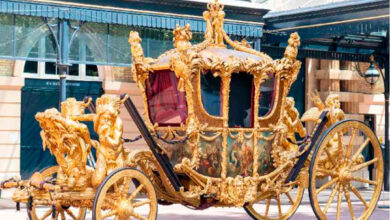There are numerous legends regarding the origin of coffee, although no one knows precisely how or when it was discovered.
The origin of coffee grown globally can be traced back centuries to the ancient coffee plantations of the Ethiopian plateau. According to legend, goat herder Kaldi discovered the potential of these cherished legumes there.
According to legend, Kaldi discovered coffee after observing that his goats became so energised after consuming the seeds from a particular tree that they refused to sleep at night.
Kaldi reported his findings to the abbot of the local monastery, who drank a beverage prepared from the berries and discovered that it kept him attentive during the evening prayer service. The abbot informed the other monks at the monastery of his discovery, and word of the energising berries began to spread.
As word travelled east and coffee beans reached the Arabian peninsula, they embarked on a voyage that would take them around the world.

Arabic: Arabian Peninsula
The cultivation and commerce of coffee began on the Arabian Peninsula. By the 16th century, coffee was known in Persia, Egypt, Syria, and Turkey. By the 15th century, coffee was produced in the Yemeni province of Arabia.
Not only was coffee consumed in private residences, but also in the many qahveh khaneh coffee houses that began to appear in Near Eastern cities. People frequented coffeehouses for a variety of social activities, as their popularity was unparalleled.
In addition to drinking coffee and engaging in conversation, the patrons also listened to music, observed performers, played chess, and read the latest news. Coffeehouses became such an essential hub for information exchange that they were frequently referred to as “Schools of the Wise.”
With thousands of pilgrims from all over the world visiting the sacred city of Mecca each year, word of this “wine of Araby” began to spread.
Coffee Enters Europe
European travellers to the Middle East carried back tales of a mysterious dark beverage. By the seventeenth century, coffee had arrived in Europe and was gaining popularity throughout the continent.
Some individuals reacted with suspicion or dread to this new beverage, dubbing it the “bitter invention of Satan.” Upon its introduction to Venice in 1615, the local clergy condemned coffee. Pope Clement VIII was requested to intervene because the conflict was so heated. Before making a decision, he tasted the beverage for himself and found it so gratifying that he gave it papal sanction.
In the main capitals of England, Austria, France, Germany, and the Netherlands, coffeehouses were rapidly becoming hubs of social activity and communication despite this controversy. In England, “penny universities” sprang up, so called because a cup of coffee and scintillating conversation could be purchased for a penny.
Coffee began to supersede beer and wine as the preferred brunch beverages of the time. Those who began the day with coffee instead of alcohol were alert and energised, and the quality of their work was significantly enhanced. (We like to consider this an ancestor of the modern office coffee service.)
By the middle of the 17th century, there were more than 300 coffee houses in London, many of which attracted merchants, shippers, brokers, and artists.
These specialised coffee shops spawned numerous enterprises. For example, Lloyd’s of London was founded at Edward Lloyd’s Coffee House.
The Modern world
Midway through the 1600s, coffee was introduced to New Amsterdam, which the British later renamed New York.
Despite the rapid emergence of coffee houses, tea remained the preferred beverage in the New World until 1773, when the colonists rebelled against a hefty tax on tea imposed by King George III. The revolt known as the Boston Tea Party permanently shifted the American preference for tea to coffee.
“Coffee – the favorite drink of the civilized world.” – Thomas Jefferson
Plantations on a Global Scale
As the demand for the beverage continued to grow, the competition to cultivate coffee outside of Arabia intensified.
In the latter half of the 17th century, the Dutch acquired seedlings. Their initial attempts to establish them in India were unsuccessful, but they were successful on the island of Java in what is now Indonesia.
The plants flourished, and the Dutch soon had a productive and expanding coffee commerce. They subsequently expanded coffee tree cultivation to the islands of Sumatra and Celebes.
Entering the Americas
In 1714, the Mayor of Amsterdam presented King Louis XIV of France with a juvenile coffee plant as a gift. It was commanded to be established in the Royal Botanic Garden in Paris by the King. Gabriel de Clieu, a youthful naval officer, obtained a seedling from the King’s plant in 1723. He was able to convey the seedling to Martinique despite a treacherous journey that included terrible weather, a saboteur who attempted to eliminate the plant, and a pirate attack.
Not only did the seedling flourish after it was planted, but it is also credited with the spread of over 18 million coffee trees on the island of Martinique over the next fifty years. This seedling was the progenitor of all coffee trees in the Caribbean, South and Central America, which is even more remarkable.
The renowned Brazilian coffee owed its existence to Francisco de Mello Palheta, who was dispatched to French Guiana by the emperor to acquire coffee seedlings. The French were unwilling to share, but the wife of the French governor, smitten by his good looks, gave him a large bouquet of flowers before he departed; concealed within were enough coffee seeds to start what is now a multibillion-dollar industry.
Missionaries and travellers, traders and colonists carried coffee seedlings to new regions, and coffee trees were planted globally. In majestic tropical forests and rugged mountaintops, plantations were established. Some plants flourished while others failed to survive. New nations were founded on coffee-based economies. There were fortunes made and lost. By the end of the eighteenth century, coffee had become one of the most lucrative export commodities in the globe. Coffee is the second most sought-after commodity in the world, after petroleum oil.



